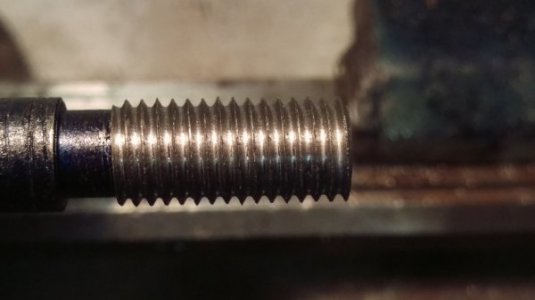H
Hukshawn
Forum Guest
Register Today
how can i do so?You need to verify whether the leadscrew is metric or imperial.
how can i do so?You need to verify whether the leadscrew is metric or imperial.
its an acme thread and i dont have an acme thread gauge... suggestions? aside from "get one"With a thread guage.
i did try that. i wasnt sure of the result... one full revolution of the thread dial gave me about 1 3/4".I believe someone already gave you an alternative method using measurement. That's above my pay grade....I use the thread guage.
no, so i have that at least, as a bandaid method. will make threading to a tight shoulder tricky (which was my initial project. i was trying to remake a piece for a traditional tool post for the other lathe im selling. it had a neat method to raise and lower the tool by using a two piece threaded cylinder. you raise and lower the tool by threading in or out the piece. the threads on the old piece were destroyed. it was just a time waster project. it may just get abandoned. )Like I said....that's above my pay grade. Does it still lose it's place when you leave the nuts engaged and reverse back to the starting point?

It is 8 tpi. So it's imperial.... but what now? By all this info, it should be threading fine.Good. As for Imperial or Metric lead screw, take a Imperial ruler and count the number of turns in 1 inch. Likely 8 per inch but could be 4,6,8 etc. If it is metric, it will not be a number that works out to a complete number of turns in 1 inch, it will be something like 10 turns in 40 mm for example which means 4 mm from crest to crest.
Pierre
